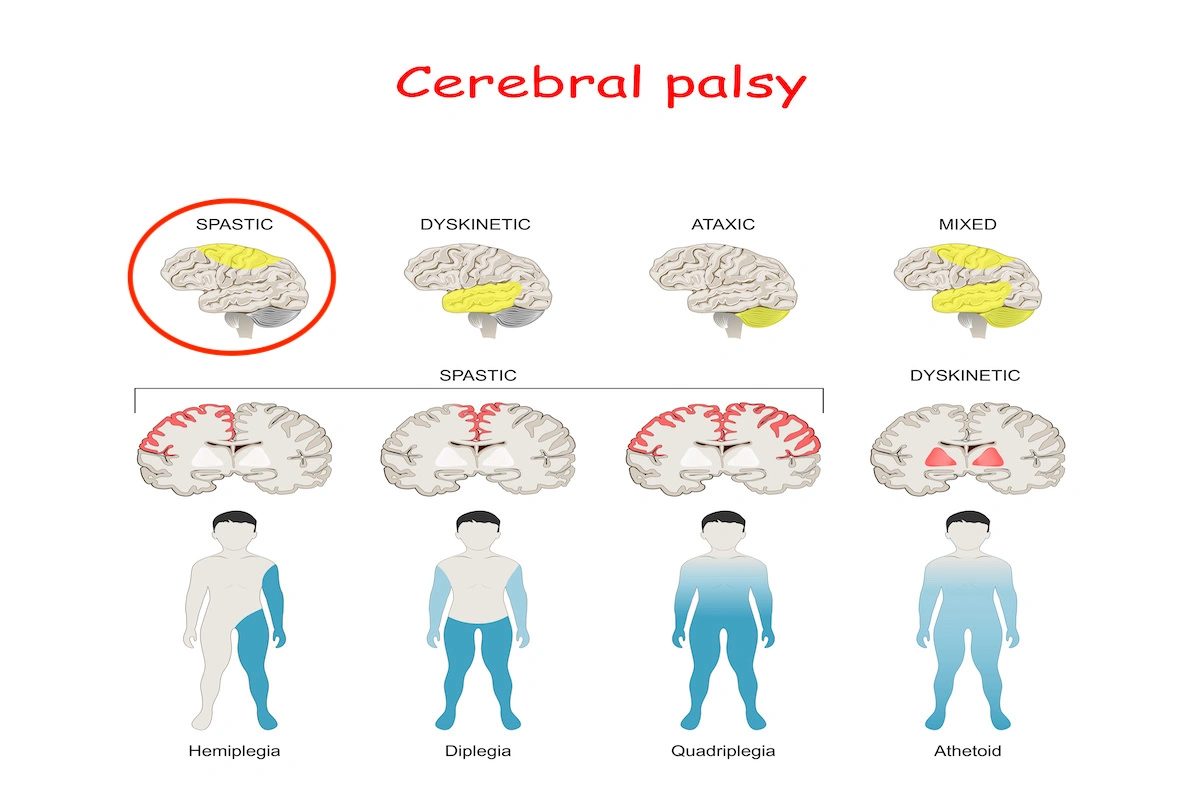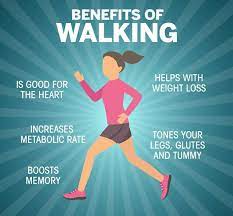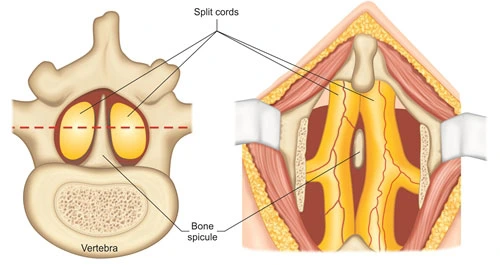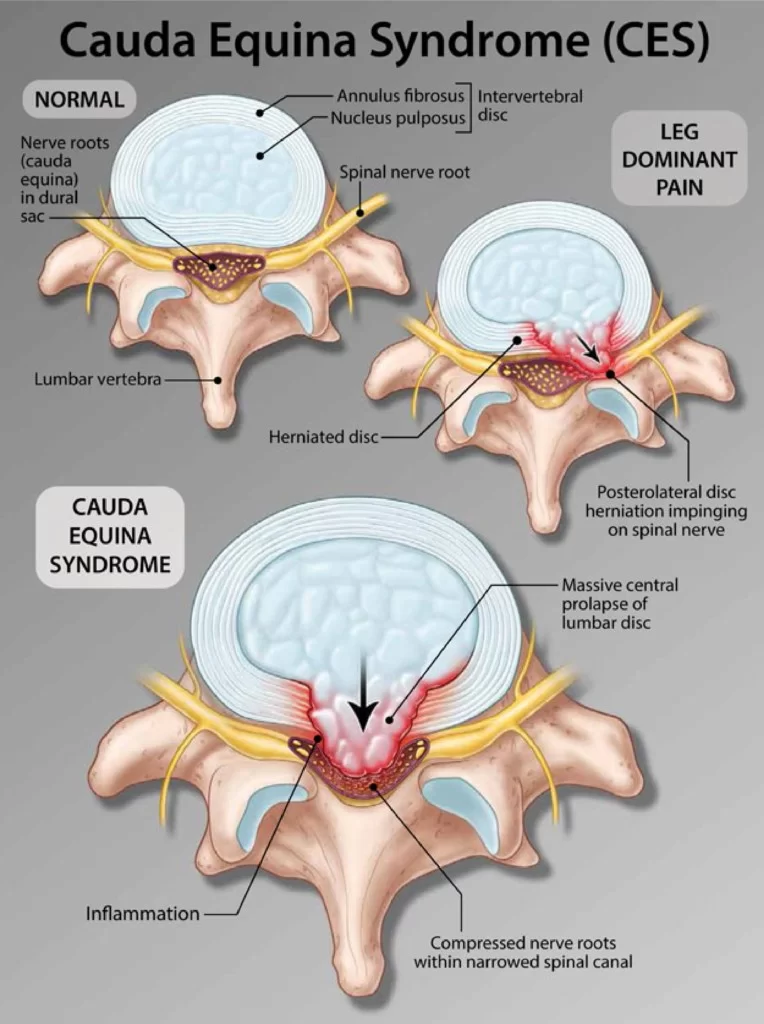Spastic Quadriplegia
What is Spastic Quadriplegia?
Spastic quadriplegia, also understood as spastic tetraplegia, is a subset of spastic cerebral palsy that involves all four limbs (both arms and legs portions).
Corresponded to quadriplegia, spastic tetraplegia is defined by spasticity of the limbs as objected to rigorous paralysis. It is dissimilar from other forms of cerebral palsy in that those plagued with the condition show stiff, jerky movements originating from hypertonia of the muscles.
Spastic quadriplegia, while involving all four limbs more or less equally, can still show parts of the body as more inflexible than others, such as one arm being tighter than another arm, and so onwards. While spastic diplegia affects two limbs, usually just the legs, spastic hemiplegia affects one or both entire sides of the body (left or right), and spastic monoplegia affects just one limb. Spastic triplegia, on the other hand, involves three limbs (such as a single arm and two legs, or one leg and two arms, etc.).
How severe is spastic quadriplegia cerebral palsy?
Because quadriplegia affects so many body parts, it is the most severe form of cerebral palsy. Typically, children with spastic quadriplegia cerebral palsy are unable to walk, and they are more likely to experience several associated disorders, such as seizures or speech impairments.
Early interventions and therapies are beneficial for a newborn diagnosed with this disease. But they will require care and assistance for the rest of their lives.
Causes of Spastic Quadriplegia
The most common causes of spastic quadriplegia are brain injuries or abnormalities in the brain’s prenatal development. The National Institutes of Health states that spastic quadriplegia can result from four different forms of brain injury. These include bleeding in the brain (intracranial hemorrhage), unusual brain development (cerebral dysgenesis), damage to the white matter (periventricular leukomalacia), and oxygen-related brain injury (hypoxic-ischemic encephalopathy or intrapartum asphyxia).
The brain’s white matter is particularly sensitive between weeks 26 and 34 of development, and damage to this area can impair the brain’s capacity to communicate with the body as a whole. Periventricular leukomalacia is a disorder that causes lesions and holes in the brain’s white matter, and it can lead to spastic quadriplegia.
The fetal brain is especially vulnerable to a variety of toxins before the 26th week of maturation, which can eventually impair proper development. Infectious agents pose a particular risk to the brain due to their ability to elicit immunological responses that in turn activate cytokines and promote brain inflammation. Infections such as meningitis, herpes, rubella, and encephalitis have been connected to the onset of spastic quadriplegia. Brain injury can also result from an immune response that is troublesome and triggered by a blood type differential between the mother and the fetus. As a result of an accumulation of bilirubin in the blood, severe jaundice can potentially cause brain damage and spastic quadriplegia.
Spastic quadriplegia can also result from brain injury brought on by bleeding in the brain from fetal strokes, blood clots, weak and deformed blood vessels, or excessive maternal blood pressure. It has been demonstrated that maternal illness, particularly pelvic inflammatory disease, raises the risk of fetal stroke.
The cerebral motor cortex and other parts of the brain can sustain damage from hypoxia or a shortage of oxygen. Hypoxia during labor and delivery, injury to the umbilical cord, womb rupture, placenta malfunction, and low maternal blood pressure can all contribute to this oxygen deficiency.
Spastic quadriplegia is more likely to occur in children who had several birth problems, including preterm, low birth weight, aspiration, head trauma, or cerebral hemorrhage. The condition is also more likely to affect children whose moms were unwell throughout their pregnancies or did not obtain enough nourishment.
Diagnosis
Diagnoses for spastic quadriplegia can be made as early as one year of age if there is a discernible developmental delay, especially in the areas of rolling, crawling, sitting, or walking. But depending on how severe it is, symptoms cannot appear until a child is three years old. The diagnosis of spastic quadriplegia is sometimes based on muscle tone since challenged children sometimes have an excessively stiff or floppy appearance.
The ability of primordial reflexes to remain past the age at which they should have vanished (6–12 months of age) is another essential diagnostic criterion. These reflexes include, among others, the Moro, sucking, and rooting responses.
Premature newborns can benefit from ultrasound treatment for the same reason.
Since the term “cerebral palsy” refers to a collection of conditions, it’s critical to establish an organized and unambiguous naming system. These conditions need to be non-transient, non-progressive, and unrelated to spinal cord injuries. Two criteria are used to categorize disorders within the group: the primary physiological symptom and the limbs that are impaired. In contrast to athetotic, hypertonic, ataxic, or atonic symptoms, spastic quadriplegia is defined as a disease characterized by the presence of spastic symptoms in all four limbs, as opposed to hemiplegic, diplegic, or triplegic situations.
A magnetic resonance imaging (MRI) or computed tomography (CT) scan may be used to determine the cause of the symptoms.
Even though a diagnosis could be achievable soon after delivery based on family history and the infant’s observation, it is frequently delayed until the kid is between 18 and 24 months old to allow for the possibility of symptom relief or growth.
Symptoms of spastic quadriplegia
Spastic quadriplegia can be detected by the odd evolution of motor skills in juveniles. Manifestations can show themselves as premature as three months though are generally seen before the child gets two years of age. Some forewarning signs contain a child of more than two months who has stiff legs that scissors and is incapable of regulating his or her head, and a child of more than twelve months who has not acquired the ability to crawl or stand.
In addition, spastic quadriplegia causes a variety of musculoskeletal complaints. Joints that cannot be stretched or manipulated are known as contractures, and they affect many people. Another symptom that alternates between fast and slow muscular contraction and relaxation is called clonus. Tremors and limb scissoring are the symptoms that manifest from this.
Dystonia, or lasting muscle contractions and tightness, is also often experienced by those affected by spastic quadriplegia. These spontaneous muscle contractions may influence the development of structural muscle near the hip and lead to hip dysplasia and dislocation, causing it challenging to sit. The assortment of these symptoms frequently makes it challenging for the patients to walk as well. Although the arms and legs of patients are frequently stiff, the neck is usually limp due to the lack of voluntary muscle control.
Compared to other forms of cerebral palsy, spastic quadriplegia symptoms are more severe and might include:
- Muscles that rapidly contract and release
- Joints that cannot stretch or move
- Muscle tightness and spasticity
- Muscle tremors
- Difficulty walking and limbs scissoring
- Speech impediments/language disorder
- Seizures
- Cognitive disabilities
A person with SQCP has spasticity and weakness in both of their legs and arms. The possible signs include:
- Weakness in both arms and legs, frequently accompanied by weakness in the trunk, back, and neck, as well as a flexed position with difficulty in stretching the flexed joints, muscles that contract quickly and then only partially relax, or taut fibres that it do not relax, muscles that rapidly contract and then partially relax
- Trouble “scissoring,” or crossing one’s legs at the knees, when walking
Arm spasticity can make it difficult to carry out daily duties, including:
- Eating or drinking
- Washing oneself
- Holding or manipulating objects
- Dressing oneself
- Writing
A person with leg spasticity finds it challenging to:
- Walk
- Stand up
- Sit upright
- Change position
- Reposition in bed
Individuals with SQCP may also have other CP side symptoms, such as:
- Vision problems
- Hearing problems
- Difficulty swallowing
- Gastroesophageal reflux
- Constipation
- Seizures
- Speech problems
- cognitive impairment which might have an impact on learning, memory, understanding, and decision-making
What impacts can spastic quadriplegic cerebral palsy cause?
A kid with spastic quadriplegia is more likely to experience limb malformations since the condition can affect the entire body. Over time, problems may arise from spastic muscles grasping the bones and joints; this is particularly true if the muscles are not appropriately treated. Other issues that arise are:
- Scoliosis: Approximately 25% of CP patients experience spinal curvature. More people with spastic quadriplegia than with any other kind of cerebral palsy are susceptible to spinal issues.
- defects in the ankles. Ankle and lower extremity abnormalities are another prevalent problem. As an example, one potential consequence of the spastic quad is ankle equinus, a condition characterized by reduced ankle flexion.
- Joint agreements: Joint contractures are yet another issue linked to spastic quadriplegic cerebral palsy. Spasticity causes the muscles around a joint to permanently shorten.
- Malnutrition: Individuals suffering from spastic quadriplegia may have trouble swallowing, which might result in aspiration of food and malnourishment. Delays in speaking and language can also be caused by uncoordinated facial muscles.
- Seizures: Compared to other types of CP, children with spastic quadriplegia experience seizures more frequently. This is a result of increased brain involvement. Additionally, the likelihood of cognitive and learning problems is higher among them.
- Incontinence and constipation: The individual with this type of CP is more vulnerable to bowel and bladder issues, such as constipation or incontinence.
Options for Spastic Quadriplegia treatment
Each kid with spastic quadriplegia has a different course of treatment based on the severity of their symptoms. For children with spastic CP, traditional treatment options include speech, occupational, and physical therapy as well as drugs, technology, assistive devices, and in rare cases, surgery.
Physical therapy
Physical therapy is nearly invariably the first line of treatment for kids with any kind of spastic cerebral palsy. Physical therapists use range-of-motion exercises, flexibility exercises, and stretching techniques to provide kids with the tools they need to be as independent as possible.
To make physical therapy as pleasurable as possible, therapists employ activities and toys that are age-appropriate.
Occupational therapy
Helping a kid acquire the ability to carry out everyday chores and activities as independently as possible can benefit them at home, at school, and in their community. Such is vocational therapy’s goal.
Due to their restricted range of motion in their arms and legs, children with spastic quadriplegia may benefit greatly from occupational therapy interventions that emphasize strengthening and coordinating the use of their hands and fingers.
Speech therapy
Speech therapy, as the name implies, aids in the development of speech and language patterns. In order to help with oral articulation and coordination, speech therapy is conducted.
Some kids with spastic quadriplegia struggle to control their tongue and facial muscles, which can make swallowing challenging.
To the degree that it is feasible, therapy is required to overcome this in order to eat safely. When a kid is unable to talk or if their speech is difficult to understand, speech therapists can also help them communicate information via the use of assistive communication devices. Their quality of life at home and in their education can both be greatly enhanced by this.
Medications
A variety of drugs are available to treat spastic quadriplegia CP. Physicians may give muscle relaxants to treat spasticity. They may be administered subcutaneously or sometimes by injection.
Children with spastic quadriplegia may also get medicine for secondary diseases such as constipation, gastric reflux, or seizures that are related to CP.
Surgery
In most cases of CP, surgery is the final option for therapy; however, in children with spastic quadriplegia, it may be helpful. Children with severe spasticity sometimes require many operations to address problems with dislocated joints, shortened muscles, spinal abnormalities, and other conditions that cause pain and disability.
Given that infants with spastic quadriplegia often experience several health problems due in major part to muscular stiffness, Selective
Dorsal Rhizotomy (SDR) might be taken into account. SDR surgery aids in muscle relaxation and increases the range of motion in different body parts.
What potential are there for a child who has spastic quadriplegia?
A child with quadriplegia has a poorer prognosis than a youngster with another type of cerebral palsy. This kind carries a higher chance of further problems and related diseases that can decrease life expectancy and impair a child’s capacity for independent living.
While there is no known treatment for spastic quadriplegia, many children have been able to live more fulfilling lives because of therapy, drugs, and surgical alternatives.
If you think that medical negligence caused your child damage, speak with a birth injury attorney. They are able to assess your case and assist you in pursuing payment to fund ongoing medical care.
Prevention
Genetically based SQCP might not be avoidable. On the other hand, risk factors can be managed by lowering the likelihood of infection before or during pregnancy.
According to a 2020 paper, the number of babies born with cerebral palsy (CP) has decreased by 35% in the preceding 15 years as a result of growing knowledge of the condition and its risk factors.
Recent research indicates that early diagnosis might assist in optimizing neuroplasticity, preventing complications, and improving the caregiver’s quality of life—even if certain cases may not be prevented.
Summary
SQCP is a kind of CP that affects all four limbs, which can be uncomfortable and make it difficult to move around on your own. Other symptoms that significantly impact a person’s day-to-day functioning might include dysphagia and dysphasia, gastrointestinal distress, and cognitive decline.
A person with SQCP can have as much freedom and agency as possible and be more comfortable thanks to a variety of therapy and support alternatives, even though there is currently no cure for the disorder, which is lifelong.
FAQs
Is spastic quadriplegia the same as cerebral palsy?
Quadriparesis, also known as spastic quadriplegia, is the most severe type of spastic cerebral palsy affecting the face, trunk, and all four limbs.
What are the characteristics of a spastic quadriplegic?
A frequent sign of generalized elevated muscular tone in children with spastic quadriplegia is stiffness in the arms and legs during flexion and extension. Little’s 1861 classic description is in line with the spasticity’s quality and variability.
What is the difference between quadriplegia and spastic quadriplegia?
Because quadriplegia affects so many body parts, it is the most severe form of cerebral palsy. Typically, children with spastic quadriplegia cerebral palsy are unable to walk, and they are more likely to experience a number of concomitant disorders, such as seizures or speech impairments.
What is the cause of spastic quadriplegia?
The primary reason is brain injury that occurs either before, during, or soon after birth. Numerous circumstances, such as preterm, fetal infections or stroke, maternal infections or illnesses, exposure to chemicals, or medical malpractice, can contribute to an infant’s brain damage.
Is spastic quadriplegia curable?
While there is no known treatment for spastic quadriplegia, many children have been able to live more fulfilling lives because of therapy, drugs, and surgical alternatives. If you think that medical negligence caused your child damage, speak with a birth injury attorney.
References
- Spastic Quadriplegia Cerebral Palsy | Causes, Symptoms, Treatment Cerebral Palsy Guidance. https://www.cerebralpalsyguidance.com/cerebral-palsy/types/spastic-quadriplegia
- Spastic quadriplegia Wikipedia. https://en.wikipedia.org/wiki/Spastic_quadriplegia
- Understanding spastic quadriplegic cerebral palsy. https://www.medicalnewstoday.com/articles/spastic-quadriplegic-cerebral-palsy







